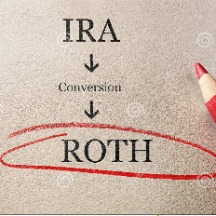Former President Donald Trump’s Tax Cuts and Jobs Act of 2017 (TCJA) is set to expire in 2025.
The TCJA made significant changes to individual income taxes and the estate tax. Almost all these modifications expire after 2025, while most business provisions and tax cuts will continue unless Congress acts
The 2017 tax changes were the first major tax reforms in 30 years. An attempt to make the individual income tax cuts permanent failed in 2018. What happens next depends on two things: the political make-up of the House and Senate as determined by voters in 2022, and who wins the presidential race and the House and Senate races in 2024.
Given the general need for the US government to raise revenue, most likely by raising taxes, some financial planners are advising traditional IRA investors to consider converting them into a ROTH IRA. In the long run, the conversion may reduce investors’ taxes, but ROTH IRA investors must pay taxes on the conversion upfront.
Mark Tabron of Tabron & Associates Financial Services urges IRA investors to talk to an expert before making a conversion. Tabron stated, “We think people should consult with their tax advisor,” to evaluate their situation.
With a traditional IRA, you generally don’t pay taxes on the money that you invest or save. Instead, you pay taxes when you withdraw those funds. With a Roth IRA, you generally do the opposite;you pay taxes on your income, then invest whatever portion you chose, but you generally don’t pay taxes on the funds you invested when you withdraw the money. With both types of accounts, the withdrawals take place after you reach 59 ½ years old.
For some investors, the traditional IRA seems wise, based on the assumption that when they retire and withdraw their money, their annual income and tax liability will be reduced. However, here’s the catch: What happens if the government raises taxes as you make withdrawals? ”Now, (they) know what tax bracket (they’re) in,” explains Tayvon Jackson of New Perspective Financial Solutions, however as they grow older the unexpected might happen—with negative financial results. Jackson states that investors must be mindful that the future is always uncertain.
Should You Convert Your Traditional IRA Into a Roth IRA?
Money


Another provision of the TCJA that impacts tax payments is how the IRS adjusts the tax brackets. Every year, the IRS adjusts more than 40 tax provisions for inflation. One of the lesser-known TCJA provisions is the Chained CPI (C-CPI), which replaces the Consumer Price Index (CPI) and implements a new inflation calculation that adjusts the tax brackets.
The Chained CPI effectively increases tax over time. Since the Chained CPI results in lower estimates of inflation than the traditional CPI, the tax brackets move upwardly slower. The brackets, including the upper end, move up as investors’ incomes rise and transfer into the next tax bracket. This allows people to move more quickly into higher brackets. This provision will not expire.
The Chained CPI effectively increases tax over time. Since the Chained CPI results in lower estimates of inflation than the traditional CPI, the tax brackets move upwardly slower. The brackets, including the upper end, move up as investors’ incomes rise and transfer into the next tax bracket. This allows people to move more quickly into higher brackets. This provision will not expire.
When the TCJA was enacted, the Congressional Budget Office estimated that implementing it would add an estimated $2.289 trillion to the national debt over ten years. Using June 22, 2022 Bureau of Economic Analysis data, The Balance, an arm of Dotdash Meredith publishing, reported that the U.S. national debt is now so high that it exceeds the annual economic output of the entire country, which is measured as the gross domestic product (GDP).
If you want to do a deep dive into the financial status of America and the rest of the strongest economies in the world, check the US Debt Clock.
Advertisers | Contact Us | Events | Links | Media Kit | Our Company | Payments Pier
Press Room | Print Cover Stories Archives | Electronic Issues and Talk Radio Archives | Writer's Guidelines






